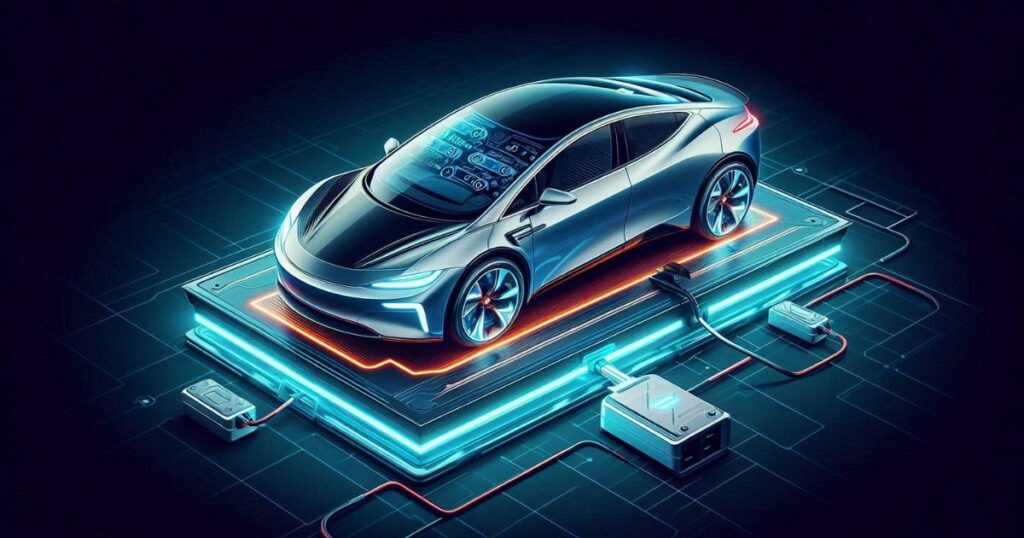Lithium-ion batteries are essential to the EV industry, driving the move towards cleaner transportation. However, recent findings reveal a significant environmental concern: per- and polyfluoroalkyl substances (PFAS) in these batteries. PFAS, known as “forever chemicals,” persist in the environment and pose potential health risks.
PFAS in Lithium-Ion Batteries
A study published in “Nature Communications” identified bis-perfluoroalkyl sulfonimides (bis-FASIs) in lithium-ion batteries. These chemicals improve battery safety and performance but have severe environmental impacts. Scientists found high PFAS levels in air, water, snow, soil, and sediment samples near manufacturing plants in the US, Belgium, and France.
Environmental and Health Risks
PFAS accumulate rapidly and do not break down, linking them to health conditions like liver damage, high cholesterol, and chronic kidney disease. The study underscores EVs’ importance in reducing carbon emissions but stresses the need to address new environmental challenges.
Jennifer Guelfo, an associate professor at Texas Tech University, emphasized a balanced approach: “Slashing [carbon dioxide] emissions with innovations like electric cars is critical, but it shouldn’t come with the side effect of increasing PFAS pollution.”
Global Concern and Regulatory Challenges
PFAS in lithium-ion batteries is a global issue. Recent studies have found low PFAS levels in European and Chinese water supplies. Bis-perfluoroalkyl sulfonimides (bis-FASIs) are difficult to degrade and have significant ecological impacts even at low concentrations.
Lee Ferguson, an associate professor at Duke University, noted the lack of comprehensive research on these chemicals’ prevalence in lithium-ion batteries, making it hard to assess the full scope of the issue.
Sample Collection and Analysis
The study sampled 75 surface water, 5 tap water, 2 groundwater, 1 snow, 15 sediment, and 21 soil samples from 87 locations near manufacturing plants in the US, Belgium, and France between January and October 2022.
Minnesota Field Sampling
In January 2022, samples were collected near the 3M manufacturing facility in Cottage Grove, MN. The bis-FMeSI levels ranged from 2.04 to 440 ng/L in surface water and up to 2300 ng/kg in soil. Follow-up sampling in June 2022 confirmed significant contamination levels.
Kentucky, Belgium, and France Sampling
Similar sampling in Paducah and Louisville, KY; Antwerp, Belgium; and Salindres, France, revealed bis-FMeSI and other PFAS contaminants at various concentrations, indicating widespread dispersion from manufacturing sites.
Mitigating PFAS Pollution
Most lithium-ion batteries end up in landfills, leaching PFAS into the environment. Only about 5% are currently recycled, and by 2040, there could be around 8 million tons of waste.
Scientists, engineers, manufacturers, and policymakers must collaborate to develop battery technologies and recycling solutions that do not exacerbate PFAS pollution. Guelfo stressed the importance of preemptive evaluation: “We need to be carefully evaluating these chemicals that are being used in sustainable energy infrastructure.”
Industry and Regulatory Actions
Companies like 3M, Solvay, and Arkema are involved in bis-FASIs production. In response to concerns, 3M announced it will exit all PFAS manufacturing by 2025, following a $10 billion settlement over PFAS contamination.
The Environmental Protection Agency (EPA) has set strict PFAS limits in drinking water and is encouraging broader strategies to remove these chemicals, despite ongoing legal challenges from chemical makers and water utilities.
Original Story at www.environmentenergyleader.com
